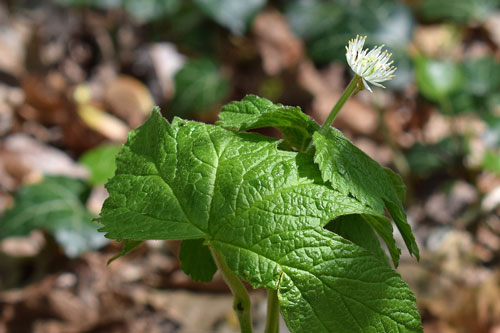Can the claims of traditional herbal medicine be substantiated scientifically? Because trials are expensive and because there is no profit in sight for researching and bringing to market anything that anyone can find or grow in nature, scant studies are available. However, papers do exist that in many instances demonstrate a medically scientific basis to support ancient theories and claims.
Recently, a research paper popped up on Medline addressing the validity of the fundamental ways Chinese herbs are classified. It is my belief that whatever can be applied to Chinese herbs should be extrapolated to herbs from other cultures and traditions such as European and North American herbalism.
It is nearly universal that herbs are classified according to their heating and cooling properties, meaning their basic ability to stimulate or sedate metabolism. If someone is in a low state, cold, tired, weak and regardless of the named disease they may have, constitutionally they need to have an herbal compound that raises metabolism. Any of the peppers, ginger, and cinnamon can be used for that purpose either singly or more usually in formula with other herbs perhaps specific to the actual disease such as echinacea or goldenseal for an infection or inflammation.
If, on the other hand, one exhibits a high fever and extreme irritability and restlessness, their metabolism could be said to be too high and they would require cooling, sedating and detoxifying herbs.
Usually bitter herbs such as goldenseal and Oregon grape have anti- pathogenic properties which may make them useful for treating bacterial or viral infections for instance. However, adding even a small amount of a spicy herb such as red or black pepper will help the formula bypass liver enzymes whose job it is to guard against strange invading substances being assimilated. Thus spicy herbs not only warm metabolism by driving circulation but also cause the primary therapeutic agent such as echinacea or goldenseal to remain in circulation longer. The advantage of this is that it requires less of the bitter herbs and less frequent dosing.
Thus if one added a quarter part of a dose of cayenne pepper along with ¾’s of the full dose of echinacea to combat a staph infection for instance, one might only need to take a half to a teaspoon of echinacea for three or four days for an infection instead of every hour or two.
The effect on metabolism on the body overall and in relation to a particular condition is what is gained from understanding and utilizing the heating and cooling aspects of herbs. The same principle that one uses when adding a small amount of pepper to an antibiotic herb will also work when using antibiotic drugs. In fact there are studies on a very well-known Indian herbal compound that substantiate this principle.
Another method of classifying herbs is based on their flavors. Different cultures specify a slightly different set of distinct flavors. For instance, the Chinese describe five flavors: sweet, spicy, salty, sour and bitter. Ayurveda adds a sixth which is astringent. Most herbs have more than a single flavor. The reason is that herbs usually have a complex chemistry and since flavors are used to identify the basic dominant chemistry and nutritional value of foods and herbs, it is not uncommon for an herb to have more than a single flavor. Whether through smell or taste, which are closely related, animals also recognize what is food and what is medicine. Often when sick, animals will seek out strange tasting medicinal herbs to eat. Thus one of the ways our forebears learned of the properties of herbs was to observe what plants a sick or injured animal might eat. In an article entitled Scents and Sensibility: How Biology Perceives Chemistry, professor Stuart Firestein describes how “the chemical senses, taste and smell, are in reality a group of multiple sensory systems capable of detecting and discriminating a wide variety of chemical structures and qualities.
A historically more recent (meaning within the last 1200 to 1500 years, as opposed to several thousands of years) development in relation to the heating and cooling properties and the flavors as a method of herbal classification and description of their possible therapeutic application is the Chinese description of herbs vis a vis the organ meridians, which includes both the internal organs themselves as well as the neurological channels that affect them. This designation was established sometime during the Song dynasty between 960 AD and 1279 AD in china.
In 2013, research entitled Study on characteristics of pharmacological effects of traditional Chinese medicines distributing along lung meridian based on medicinal property combination appeared on Medline where the Chinese authors researched and attempted to validate the efficacy of using herbs based on the three methods of classification, heating/cooling energies, flavors and organ meridians, in this case being only the lung, though it seems clear the implications for this research is intended to apply to the use of herbs for all the internal organs.
Examples were given:
- Mild-sweet flavored herbs entered the lung organ-meridian and could affect blood sugar levels
- Mild-bitter lung herbs exhibited anti-bacterial, anti-hypertension, anti-oxidation effects. (In herbal theory, bitter tasting herbs are antipathogenic and clearing.)
- Hot-bitter lung herbs showed phlegm eliminating and anti-inflammatory effects. (In herbal theory, heating herbs stimulate metabolism and bitter herbs are clearing.)
When properties where taken for upper respiratory problems these all had anti-bacterial and anti-inflammatory effects, which is consistent with Chinese medical theory that describes the lung as an organ highly susceptible to external pathogens such as bacteria or virus.
While proof based on randomized, human double blind, placebo-controlled studies may be not be extensive, there is a considerable body of information and studies coming from countries such as China and India because of their well-established traditional medicine. These can be useful to the herbalist using energetic traditions, and those who might question the traditional tenets of traditional herbal medicine.

